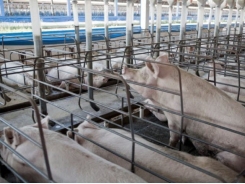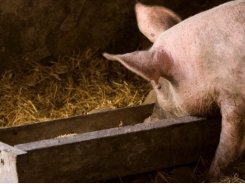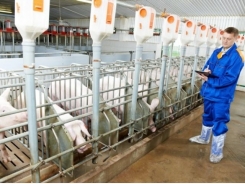Anise additive may boost piglet production, feed intake

Piglets of sows given an anise feed additive may see improved feed intake and weight gain, when the scented supplement is included in nursery feed.
In an experiment conducted at Louisiana State University, researchers sought to determine the influence that additive anise would have on lactating sows and recently weaned piglets, they said. The group reported findings in The Professional Animal Scientist.
In the research, the group examined if the use of anise oil (AO) as a feed additive in the feed of lactating sows and in nursery feed would increase piglets’ consumption of the scented feed post weaning, they said.
“Results indicate that feeding AO to weanling pigs increased feed intake immediately after weaning,” they said. “The progeny of sows fed AO during lactation also consumed more feed during nursery phase 1. Although growth rate was not affected during nursery phase 1, AO increased growth rate in later nursery stages, with no positive effect on feed efficiency.”
Why anise
Piglets do not always consume adequate amount of feed at weaning, and the lowered amounts of feed intake can damage “intestinal integrity, decrease gut functionality and increase the susceptibility of the piglet to enteric disease,” said the researchers.
In some animal species, including dogs and rabbits, exposure to specific plant aromatics in the perinatal stage has increased feed intake of products with the same flavor, they said. However, results haven’t been as consistent in animal feed, possibly because of limited recognition.
Anise oil has been found to have positive recognition in mammals and is generally known to be a safe substance, they said.
“Lambs and pigs have responded positively to prenatal and perinatal exposure to anise flavored feed in the double choice gate test, the Y maze test, the novel environment test, and the rooting test,” they said. “Therefore, the objective of this study was to assess further whether perinatal exposure to AO would affect pig or sow performance, and whether the potential effects from lactation would improve feed intake during the first week after weaning, as well as affect growth performance during the nursery phase.”
Experiment
In the experiment, 24 sows were fed one of two diets starting on day 110 of gestation, said researchers. The diets included a corn and soybean meal control diet, and that diet with 50 mg/kg of anise oil.
Piglets were weighed within the first 48 hours and were weaned at about day 20, they said. Piglets and sows were weighed at weaning, and changes in body weight (BW), backfat and body condition scores were assigned for sows.
After weaning, 168 piglets were fed either the control or the AO experimental diet for a three-phase, three-week nursery program, they said.
“Pigs were allotted within lactation treatment to 2 nursery dietary treatments in a randomized complete block design with dietary treatments arranged in a 2 x 2 factorial arrangement in a split-plot design,” said researchers. “The main plot was lactation dietary treatment (control or AO) and nursery diet within the plot.”
Feed intake was measured on a daily basis during the first week and BW and feed intake were determined weekly afterward, they said.
Results
The anise treatments did not appear to have an influence on sow preformance, said the scientists. However, it was found to increase piglet average daily feed intake (ADFI) post-weaning.
“Overall, progeny of sows fed control tended to have the least ADFI when fed control and greatest when fed AO,” they said. “Pigs fed AO during the nursery phase tended to have greater ADG [average daily gain] and BW.”
In the first phase, piglets getting the control feed had the lowest ADFI, they said and those getting the AO-supplemented diet had the highest.
“A tendency for an interaction between lactation and nursery dietary treatments was observed on d 7,” said researchers. “Pigs fed control, from sows fed control, consumed 19% less feed than pigs in the other treatment groups.”
Piglets getting the AO nursery diet, from sows that had an AO diet, had 13% higher average daily feed intake during the first phase and higher consumption rates during the latter two stages, they said.
In the second week, the piglets getting AO had better ADFI, ADG and an improved gain to feed ratio, they said. “In week 3, progeny of sows fed control had the least ADFI when fed control and the highest when fed A0,” they added.
Related news
Tools

Phối trộn thức ăn chăn nuôi

Pha dung dịch thủy canh

Định mức cho tôm ăn

Phối trộn phân bón NPK

Xác định tỷ lệ tôm sống

Chuyển đổi đơn vị phân bón

Xác định công suất sục khí

Chuyển đổi đơn vị tôm

Tính diện tích nhà kính

Tính thể tích ao




 Sugar beets may offer feed alternative, boost young…
Sugar beets may offer feed alternative, boost young…  Feather meal may boost growth, gut health in…
Feather meal may boost growth, gut health in…